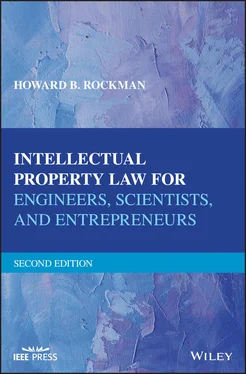Despite this court decision, over 100 years later, on June 11, 2002, the United States House of Representatives in Washington, D.C. passed a resolution honoring the achievements of Antonio Meucci. This resolution briefly sets forth the fact that Meucci developed his speaking device in 1871 so he could communicate with his ailing wife on a different floor of his house, that he published a description of his invention in New York’s Italian language newspaper at the time, and that he was too poor to obtain patent protection or commercialization of his invention. The resolution also implies that Meucci submitted his earlier models to Western Union, who then lost them, but that before they were lost, Alexander Graham Bell conducted experiments in the same laboratory at Western Union where Meucci’s earlier materials were stored. The resolution also refers to a lawsuit filed by the United States Government on January 13, 1887, to annul the Bell patent on the grounds of fraud, which lawsuit is discussed a few paragraphs below. The resolution concludes that if Meucci had been able to pay the $10 fee to maintain his caveat after 1874, no patent on the telephone would have been issued to Alexander Graham Bell.
My continuing research led me to the rebuttal comments of Edwin S. Grosvenor, published at http://www.alecbell.org/meuccimemo.html. In his memo, Mr. Grosvenor refers back to the case of American Bell Telephone Company v. Globe and Meucci, and points to those facts in the court’s decision that would completely repudiate the grounds set forth in the 2002 resolution of the U.S. House of Representatives. The Grosvenor article points out that the Meucci caveat disclosed a mouthpiece and an earpiece connected by a taut wire that transmitted vibrations of sounds mechanically (not electrically) over the wire. The Grosvenor article also states that Meucci had financial help and he was not destitute, and could have commercialized his invention had it been worth anything. Grosvenor thus concludes that the Meucci caveat, and indeed his “invention,” does not describe or suggest any of the elements of electrical communication of voice, or the principle of undulating current that is set forth in the broadest claim of the Bell patent.
Upon my review of the American Bell Telephone Company v. Globe and Meucci court decision of July 19, 1887, I conclude that the comments of Mr. Grosvenor are more likely correct in comparison to the statements by the United States House of Representatives. I draw this conclusion knowing full well that Mr. Grosvenor is the great‐grandson of Alexander Graham Bell.
Another incident that is of interest is the lawsuit filed by the United States Government, referred to in the House of Representatives resolution discussed above, attempting to invalidate the Bell telephone patents on the grounds that they were obtained by fraud. One Dr. James Rogers of Tennessee conceived that a legal challenge to the Bell patents, having merit or not, would protect infringers for a period of time, even if the challenge was not legitimate. The purpose was to delay the American Bell Telephone Company from successfully suing infringers until the Bell patents expired. Rogers’ son, an electrician, came up with a series of inventions, which apparently were primarily a figment of his imagination. Casey Young, a former member of the U.S. Congress from Tennessee, and several associates incorporated the Pan‐Electric Company, and 10% of the stock was given to Augustus H. Garland, a former governor of Arkansas, and at that time a Senator from Arkansas. Garland was also appointed as the attorney for Pan‐Electric Company. Garland assured investors that the Rogers patents covered devices that did not infringe on the Bell patents, and thus was able to raise substantial investment capital for Pan‐Electric.
In 1884, the Pan‐Electric organizers convinced the United States House of Representatives to enact a bill granting authorization to the federal government to file lawsuits to invalidate patents under a listing of potential circumstances. The Senate failed to pass the act, but Grover Cleveland was elected President later that year, and he appointed none other than Augustus H. Garland, attorney for Pan‐Electric, as United States Attorney General. The Pan‐Electric principals asked Garland to file a lawsuit in the name of the United States seeking annulment of Bell’s patents on the grounds that Bell had obtained his patents by fraud, and that Bell was not the first inventor of the telephone. Garland then left on a hunting trip in Arkansas, and the Solicitor General, one of the Attorney General’s staff members, hastily granted the request while the Attorney General was away. The Secretary of the Interior upheld the decision to file the lawsuit, applying the reason that charges of fraud were being made against federal officials in the Patent Office, and the truth of these charges should be tested by the filing of a lawsuit at government expense against the American Bell Telephone Company.
The government lawsuit was filed in January 1887, and the initial government effort in the litigation to enjoin Bell from filing further lawsuits against infringers did not succeed. Previously, in 1885, the New York newspapers had exposed the intricate stock holdings of Pan‐Electric by the United States Attorney General, members of Congress, and past and present members of the Federal Executive Branch. A congressional committee investigated the matter and concluded that Garland was not guilty of any misdeeds. Grover Cleveland retained Garland as Attorney General.
The government case lumbered through the litigation process, without ever reaching a result. The lawyer in charge of the government’s case passed away in 1896, and the government let the case drop. During 1892, Bell spent a total of nine weeks, at intervals, testifying in the government lawsuit and providing a complete account of the development work that led to the invention of the telephone. In 1908, the American Bell Telephone Company printed the complete testimony of Alexander Graham Bell, both direct and cross‐examination, in a 445‐page document.
The government case at an interim point reached the United States Supreme Court on Bell’s motion to dismiss the lawsuit. The government case against Bell was decided by the Supreme Court on November 12, 1888, which remanded the case to the lower court for further litigation. See United States v. The American Bell Telephone Company, 128 U.S. 315 (1888). The Court held that if Bell was aware when he filed his patent applications that the same subject matter had been previously discovered and put in operation by other persons, he was guilty of a fraud upon the public, and that the monopoly that the patents granted to him ought to be revoked and annulled. The Supreme Court held that the federal courts do have the power to grant such relief when it is proven that patents were obtained by fraud. The rationale of the Court’s decision is that to obtain a patent, the inventor must know that he or she was the original inventor. However, the case never reached the point where the fraud allegations in the complaint were proven to be true or false.
The United States House of Representatives in its resolution of June 11, 2002, states merely that the government of the United States filed the lawsuit, and that the Supreme Court found the complaint viable and remanded the case for trial. The House of Representatives resolution, in my opinion, leaves out many of the salient details, and presents a disjointed and incorrect view of the invention of the telephone.
Bell subsequently worked on transmitting sounds on a beam of light, a precursor of today’s fiber optic systems. He also did work on techniques for teaching speech to the deaf, and was instrumental in 1888 in founding the National Geographic Society. The entire story of Alexander Graham Bell, including his involvement in other inventions such as aircraft, would unduly lengthen this chapter. Therefore, the reader is directed to the resources listed in the Bibliography to gain a further understanding of the genius and works of Alexander Graham Bell.
Читать дальше












